Search results for "2011/04/2010/05/song-without-words"
Teemu Keskisarja: Vihreän kullan kirous. G.A. Serlachiuksen elämä ja afäärit [The curse of green gold. The life and affairs of G.A. Serlachius]
17 March 2011 | Mini reviews, Reviews
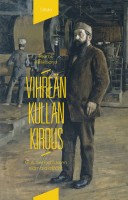 Vihreän kullan kirous. G.A. Serlachiuksen elämä ja afäärit
Vihreän kullan kirous. G.A. Serlachiuksen elämä ja afäärit
[The curse of green gold. The life and affairs of G.A. Serlachius]
Helsinki: Kustannusosakeyhtiö Siltala, 2010. 350 p., ill.
ISBN 978-952-234-041-2
€ 35, hardback
In the famine years of the 1860s and with no inherited fortune to his name, G.A. Serlachius (1830–1901) built his industrial centre in the rural backwoods of Mänttä. His work laid the foundations for what would become one of Europe’s leading paper manufacturers. G.A. Serlachius was a Finnish self-made man whose education was cut short due to his family’s financial difficulties. The energetic Serlachius is considered to have pioneered contacts with Western European markets; he was responsible for bringing the first icebreaker ship to Finland. Serlachius was also known as a patron of the arts and a supporter of artists; the collection of the Serlachius Art Foundation is his best-known legacy. According to this biography, Serlachius suffered from ‘an extremely advanced megalomania’ in the opinion of his bankers, and his personality was ‘more aggressive than many Finnish-born generals of the Pax Russica’. The Association of the Friends of History selected this book as its History Book of the Year for 2010.
Translated by Ruth Urbom
Markku Koski: ‘Hohto on mennyt herrana olemisesta’ [‘The glory has gone from being a VIP’]
7 May 2010 | Mini reviews, Reviews
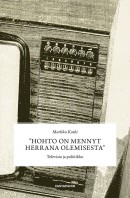 ‘Hohto on mennyt herrana olemisesta’ – Televisio ja poliitikko
‘Hohto on mennyt herrana olemisesta’ – Televisio ja poliitikko
[‘The glory has gone from being a VIP’ – the television and the politician]
Tampere: Vastapaino, 2010. 254 p.
ISBN 978-951-768-249-7
€ 29, paperback
This book, based on the author’s doctoral thesis in Media and Communication Studies at the University of Tampere, presented in February 2010, takes as its starting point Walter Benjamin’s well-known essay, ‘The Work of Art in the Age of Mechanical Reproduction’. Koski applies Benjamin’s ideas on cinema and film stars to contemporary television and politics. Koski maintains that while the public have become alienated from politics, politicians have also become alienated from themselves and have become reiterative entities whose essential content is repetition. After television and other new media have called into question traditional forms of politics, a significant challenge for politicians has been to prevent viewers from getting bored. Koski discusses relationship between politics and comedy, the ‘cynical’ viewer, the popular public image of Marshal Mannerheim (an iconic figure in Finnish history and politics) and the popularity of Sauli Niinistö, the frontrunner in the upcoming (2012) Finnish presidential election. Dr Koski also considers historical and contemporary image politicians in various other countries.
Riikka Pulkkinen: Totta [True]
22 October 2010 | Mini reviews, Reviews
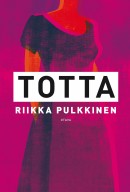 Totta
Totta
[True]
Helsinki: Otava, 2010. 333 p.
ISBN 978-951-1-22965-0
€ 31,40, hardback
The second novel by Riikka Pulkkinen (born 1980) is a comprehensive work that tackles big themes: love, death and rejection. Pulkkinen’s particular strengths as an author are her richly nuanced language and her mastery of structure. While the ending provides food for thought, the book is an enjoyable novel about childhood, growing up, daring to love and live. Martti, a seventy-year-old artist, is caring for his sick wife, a highly respected psychologist. Martti and Elsa have had a long and happy marriage. Then it emerges that Martti had a long affair with their live-in childminder Eeva, whose story grows into one of the main plot strands of the book. Their love story takes place against the background of the 1960s, when the waves passing through European society reached Finland as well. Pulkkinen skilfully brings the perspective of the now grown-up daughter Eleonoora into the mix, as she views her early childhood under the care of two mother figures. At the 2010 Frankfurt Book Fair translation rights to Totta were sold to six countries, which at least goes to show that there is interesting literature to be found in the Nordic countries beyond the ubiquitous crime novels.
Georg August Wallin: Skrifter. Band 1 [Writings. Volume 1]
2 December 2010 | Mini reviews, Reviews
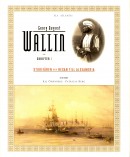 Skrifter. Band 1: Studieåren och resan till Alexandria
Skrifter. Band 1: Studieåren och resan till Alexandria
[Writings. Vol. 1: Studies and the journey to Alexandria]
Utg. [Edited by] av Kaj Öhrnberg & Patricia Berg & Kira Pihlflyckt
Helsinki: Svenska litteratursällskapet i Finland, 2010. 455 p., ill.
ISBN 978-951-583-189-7
ISBN 978-91-7353-371-3 (Bokförlaget Atlantis, Stockholm, 2010)
€ 43, hardback
This is the first volume of a planned six-volume critical edition of the writings of Finnish Arabic scholar Georg August Wallin (1811–1852). The main material for the first volume consists of full text of Wallin’s travel diaries and letters from the years 1831–1843. The Arabic texts are accompanied by parallel Swedish translations. The preface contains an overview of the phases of Wallin’s life and the schools of Orientalism and Rousseau which influenced his work. Wallin’s seven-year research journey to the Middle East, and particularly his crossing of the northern Arabian peninsula as the first Western researcher to do so, brought Wallin great international acclaim. Wallin was the first researcher to record the poetry and study the dialects of the desert Bedouin. He is particularly well known for his visits to the holy cities of Mecca and Medina, forbidden to non-Muslims, and to the women’s quarters in their harems.
Panem et circenses?
2 February 2012 | This 'n' that

The Guggenheim Foundation's global network of museums
What does Helsinki need? Bread and circuses, yes, but at what cost the latter?
In January – after a study that cost the Finns a couple of million euros – the Salomon R. Guggenheim Foundation (est. 1937) indicated that it was favourably inclined toward the construction of a new art museum, bearing its name, in Helsinki. The leaders of Helsinki city council are aiming to make a positive decision as soon as possible.
The cost of the building, whose site adjoins the Presidential Palace in central Helsinki, is estimated at 130–140 million euros, with design costs of about 11 million euros. Unlike in the case of Berlin, no existing building is considered suitable; instead, an architectural dream must be realised, with plenty of wow-factor.
Its mere maintenance costs will be around 14.5 million euros a year. It has been estimated that the Helsinki Guggenheim’s income could be 7.7 million a year. In addition, a 20-year Guggenheim licence costs 24.6 million euros.
The project has provoked widely differing reactions. Proponents of the project believe that the Guggenheim brand would bring thousands of new visitors to Helsinki and that half a million people would visit it each year. Opponents doubt this, speak of a ‘Guggenburger’ franchising concept and of the fact that not even the existing art museums of Helsinki are particularly crowded.
The odd thing is, however, that the basic demographic differences between Helsinki and, say, Bilbao – where the Guggenheim museum has been a big success – are constantly ignored in the discussions: the population of Spain is almost 50 million and another 50 million visitors go there every year, while the corresponding figures for this most northerly part of Europe are five million inhabitants and visitors.
In Bilbao, moreover, there was no museum of contemporary art before the advent of the Guggenheim; Helsinki, on the other hand, opened Kiasma, a new museum of contemporary art (165,000 visitors in 2010) in 1998 and the neighbouring city of Espoo its Emma museum of modern art (82,000 visitors in 2010) in 2006.
Economic prospects on any level now offer little hope. The Finnish government, in the shape of the ministry of culture, has just cut grants to state-aided museums by three million euros – the Museum of Cultures in Helsinki, for example, is closing its doors, and some 40 of the museum staff elsewhere will be sacked. The government is not promising any money to the Guggenheim.
How, then, to fund an annual deficit of 7 million euros? Finland does not have a great supply of art-minded millionaire sponsors, and no one has so far made any concrete offers on how to fund this project.
The Guggenheim Foundation itself is not taking any financial risks with this project. Neither has it announced in any detail what sort of art will feature in the museum’s temporary exhibitions.
People who live in the city are more preoccupied with, for example, the shortcomings of the health services: there are waiting lists for everything, often of many weeks, and the old university children’s hospital has outgrown its present space. There are cuts and shrinkages yet to come in the spending structure of the country as a whole and of Helsinki – civil servants themselves estimate that the city’s budget is not sufficient to cover even the upkeep of basic services.
To judge by the public debate, the deep ranks of Helsinki taxpayers do not want a new monument, one for which it will be necessary to pay – in addition to maintenance – more than a million euros a year to an American brand for the mere use of its name, for more than 20 years.
Do the people of Helsinki wish to begin to pay additional taxes for the revival, yet again, of the age-old dream of guaranteeing Finland ‘a place on the world map’, in a situation where economic difficulties are a matter of everyday life for increasing numbers of them? (We believe, incidentally, that Finland already has an appropriate place on the world map.) Will their opinion be asked, or heard?
Getting by
18 May 2012 | Non-fiction, Reviews
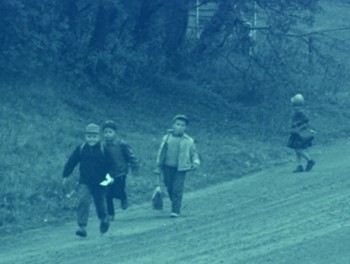
To school: children on the march – no buses or taxis in the Finnish countryside after the war. Photo: the cover of Kauaksi kotoa
Kauaksi kotoa. Muutoksen sukupolvi kertoo
[Far from home. Stories of the change generation]
Toim. [Ed. by] Anja Salokannel & Kaija Valkonen
Helsinki: Kirjapaja, 2012. 320 p.
ISBN 978-952-247-291-5
€32.90, hardback
The post-war period in Finland was a time of hope and reconstruction, of procreation and tough, grey heroism. Finland picked itself up by the bootstraps, as fathers who had been ‘driven mad in the war’, who took to drink or spat blood because they had shrapnel in their lungs, built veterans’ houses around the small towns and cleared fields in the backwoods. More than 83,000 men were killed in the wars (Winter War 1939–1940, Continuation War 1941–1944).
Mothers worked like men. The baby boomers – the demographic peak which consists of those born between the war years and 1950 (in 1946–1949 more than 100,000 babies were born each year, compared to some 60,000 in 2011) – had to be fed and clothed and educated for a better and more prosperous future.
Now the baby boomers have started to retire. Editors Anja Salokannel and Kaija Valkonen (baby boomers themselves) have compiled the book Kauaksi kotoa. Muutoksen sukupolvi kertoo (‘A long way from home. Stories of the change generation’), in which 21 men and women talk about their lives during the decades of change. More…
Mother-days
30 June 2006 | Fiction, poetry
Poems from Yhtä juhlaa (‘It’s all a big celebration’, WSOY, 2006)
(a square metre, 3.)
Now for the-kick-of-being-the-good-mum:
after the rye porridge
after the sons washed with camomile foam
and slipped into clean sheets
with mummy singing a sweet song.
Something about shadowed snow
and how at the blue twilit-moment one can
go inwards. If you’re up to looking. All that garbage and slag:
ash from the too-small days, clotted with
non-combustible blots, even though here
the sky’s clear
and the windows open to the winds.
Good grief, here we’re making new people.
But all I’d time for
was the track from the dishcloth to the nappy bin,
and back from the children’s painting-table
to the sink. No job
for spoilt girls, this: the prissiest minx
would soon turn woman in this fix:
kids coming next after next,
years of full-time labour
in a square metre where
you make no point about peccadilloes,
because so much is at stake.
You’re no longer a rose,
pimpinella, rosabella,
but subsoil: loam
and spots of unrottable compost.
A feebler person would have reversed on
the first tantrum;
the child’s learnt to say things
and is saying things
I never thought would come. More…
Poems, poèmes
30 June 1987 | Archives online, Fiction, poetry
Poems from Mies joka rakasti vaimoaan liikaa (‘The man who loved his wife too much’, 1979 and Vaikka on kesä (‘Although it’s summer’, 1983). Interview by Markku Huotari
Look at this epitaph with whiskers.
Threw herself so gladly into my troubles, sometimes she seemed to be bearing, properly, my burdens.
A dog called Julia. Combining
July and Yuletide.
Often thought of putting her down, so she wouldn’t need to die.
Smash her skull or break her neck
with my own hands, to stop her mourning her premature death.
Which still seems to be delaying.
She puts her four paws gently down, one at a time. So the Lord won’t hear her still about
and whisk her away.
Two years ago, she steps on some glass, her toe sticks out, a tendon’s cut.
She looks at me. Believe it or not,
I’m grieved by little Julia’s lot: for a second
I think the blood’s dripping from my own heart. More…
Elmo’s fire
30 June 2008 | Archives online, Fiction, Prose
Extracts from the novel Elmo (WSOY, 1978)
After returning to Finland and Kainalniemi, Elmo got to feel like a celebrity. The various sport clubs were insufferably keen on getting Elmo into their training rings, but Elmo rebuffed them. He had belonged to Kainalniemi Sweat since he was a little boy, and that was enough for him. His mind was occupied by other matters. In the end, even his mother and father began to wonder at his attitude.
‘Why don’t you just go, since they keep asking, and since you do seem to have some talent in that direction,’ his mother urged as she made Sunday coffee from the can Elmo had brought as a gift.
‘Right. Somewhere down the road you could snatch a few gold medals out from under the noses of the others, just for the hell of it,’ his father said. More…
Art or politics?
16 February 2012 | This 'n' that
You’re going about your business in Helsinki Railway Station on a cold winter’s day — waiting for your train, buying tickets or newspapers or just taking short-cut through the building to keep warm – when suddenly the bloke next to you bursts into song. And not just him: along with a couple of dozen others, he makes the air ring with the patriotic song Finlandia, sung in harmony and perfectly in tune. (The video can be viewed at http://www.youtube.com/watch?v=wO63xt2jWtc) More…
A happy day
12 August 2010 | Fiction, Prose
‘Muttisen onni eli laulu Lyygialle’ (‘Muttinen’s happiness, or a song for Lygia’‚) a short story from Kuolleet omenapuut (‘Dead apple trees’, Otava, 1918)
‘Quite the country gentleman, eh, what, hey?’ says Aapeli Muttinen the bookseller. ‘Like the poet Horace – if I may humbly make the comparison, eh, dash it? With his villa at Tusculum, or whatever the place was called, given to him by Maecenas, in the Sabine hills, wasn’t it? – dashed if I remember. Anyway, he served Maecenas, and I serve – the public, don’t I? Selling them books at fifty pence a copy.’
Muttinen’s Tusculum is his little plot of land in the country. A delightful place, comforting to contemplate when the first signs of summer are beginning to appear, after a winter spent in town in the busy pursuit of Mammon, under skies so grey that the wrinkles on Muttinen’s forehead must have doubled in number. A summer paradise of idleness… More…
